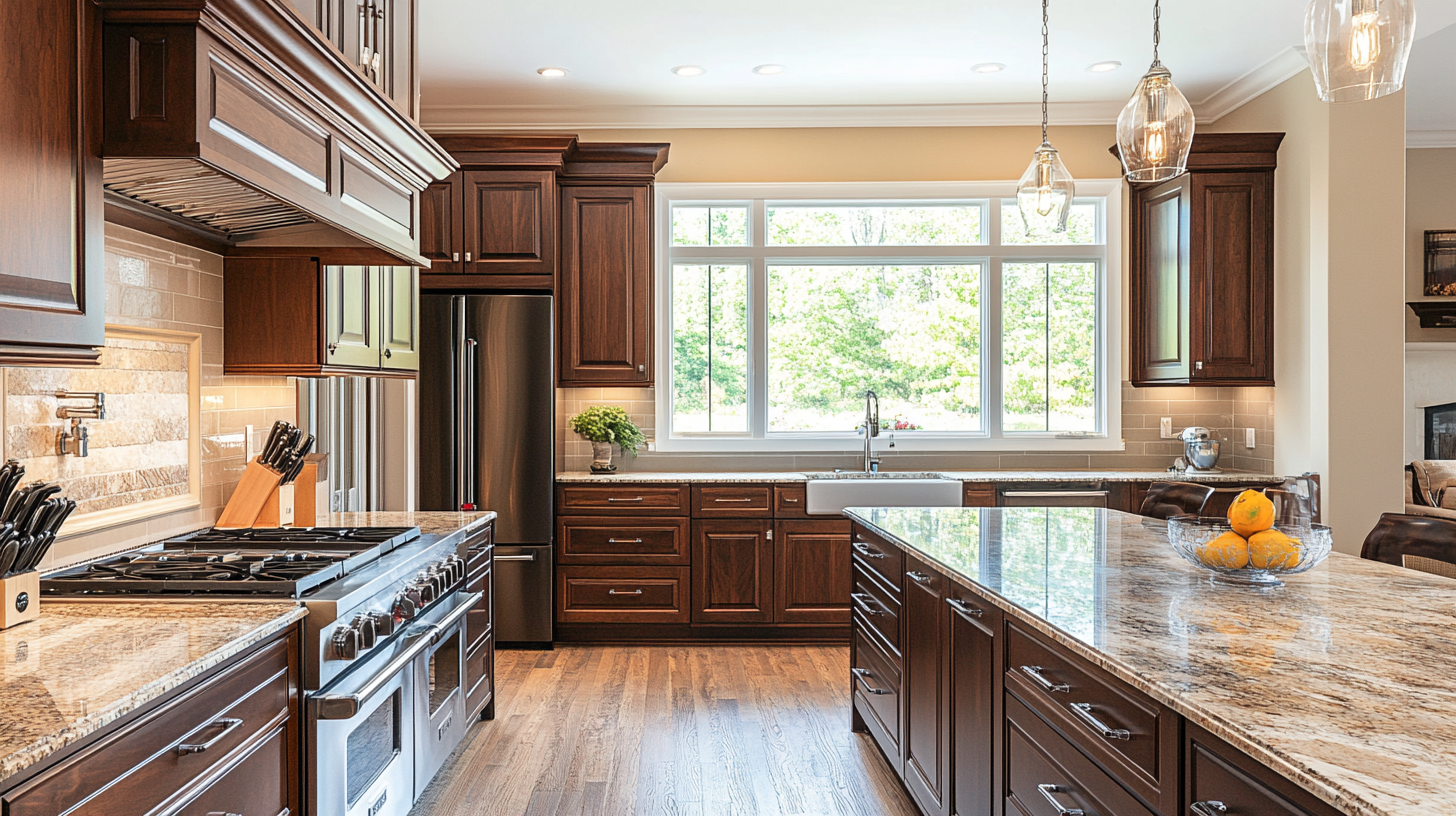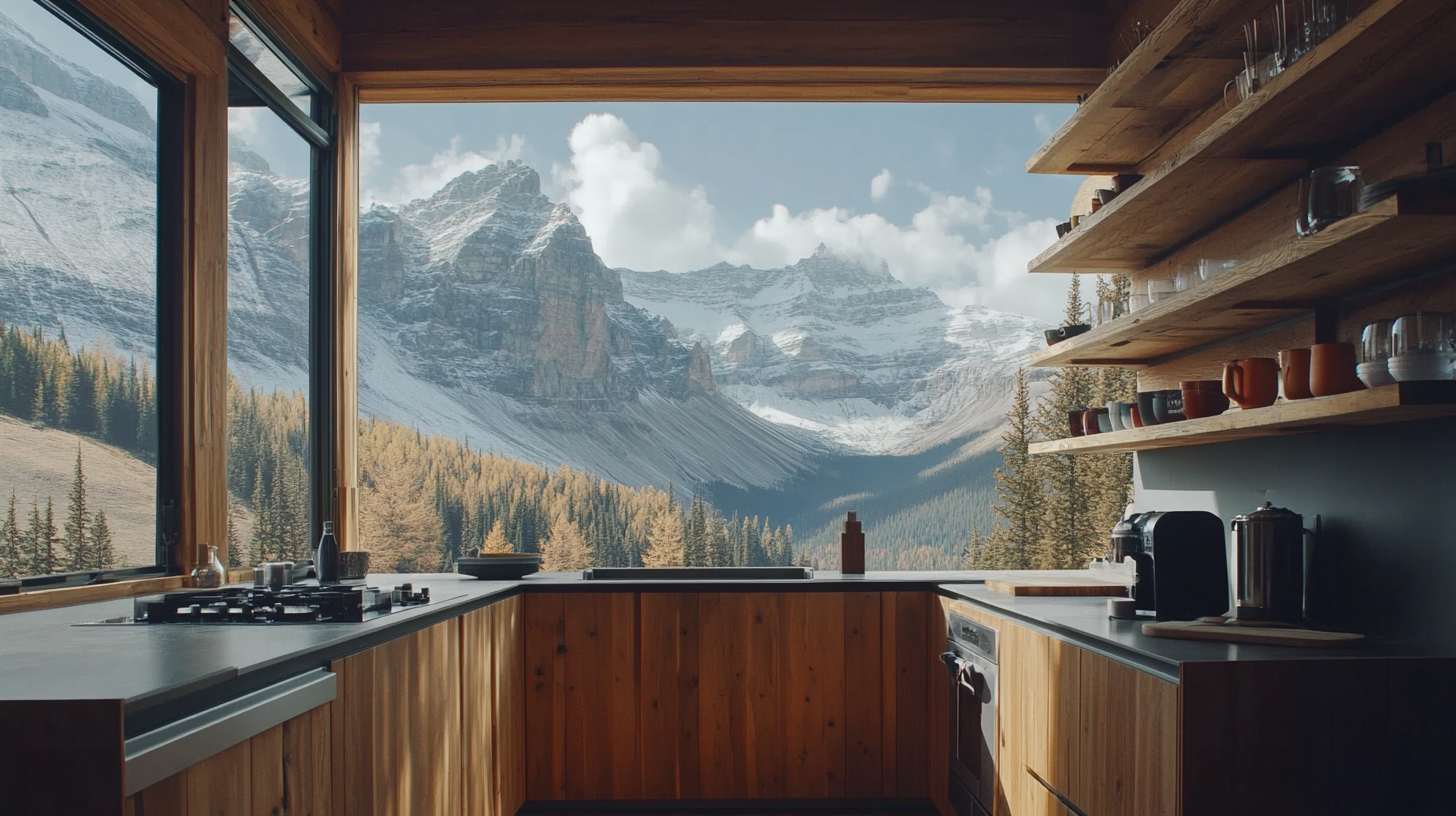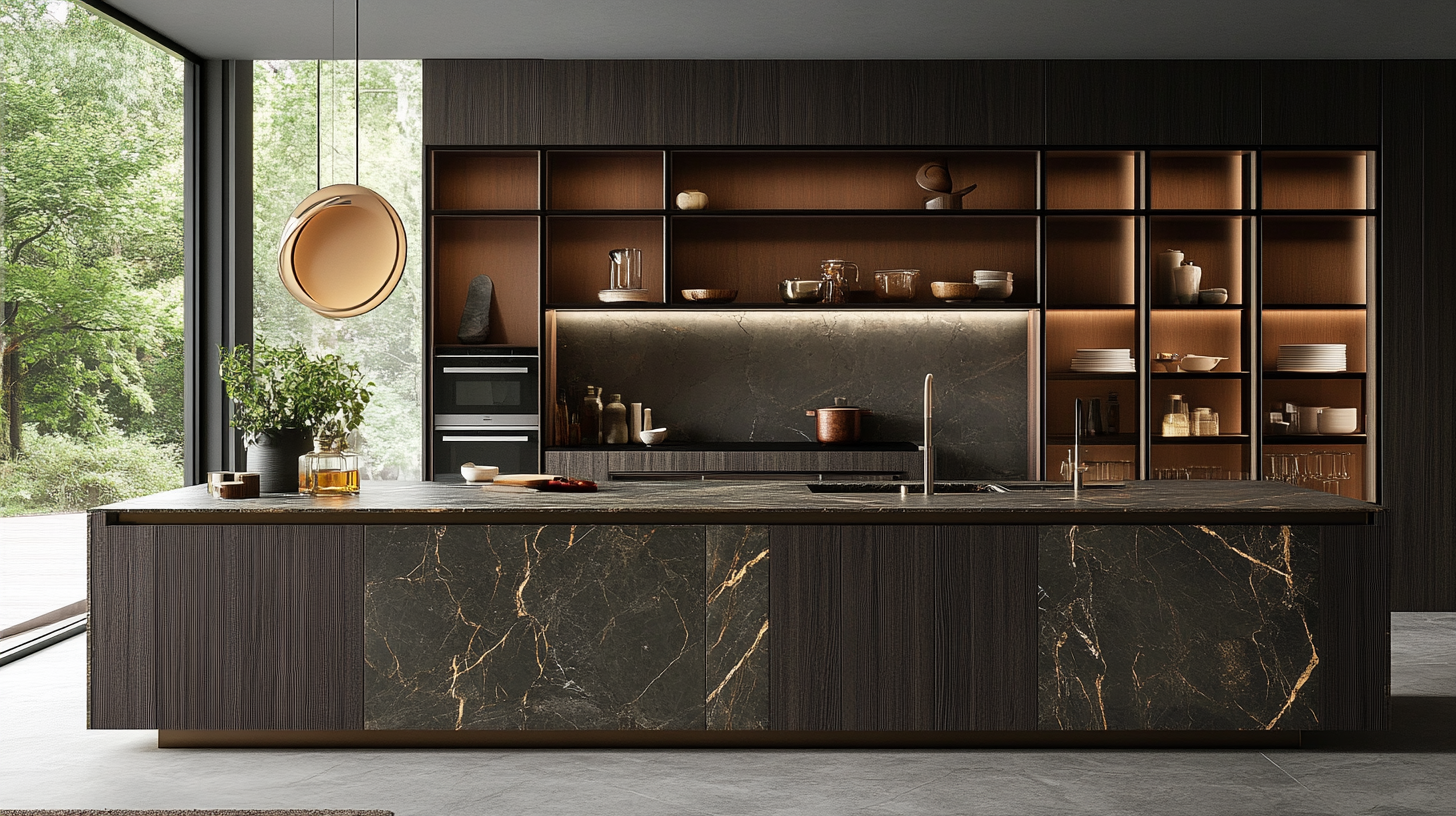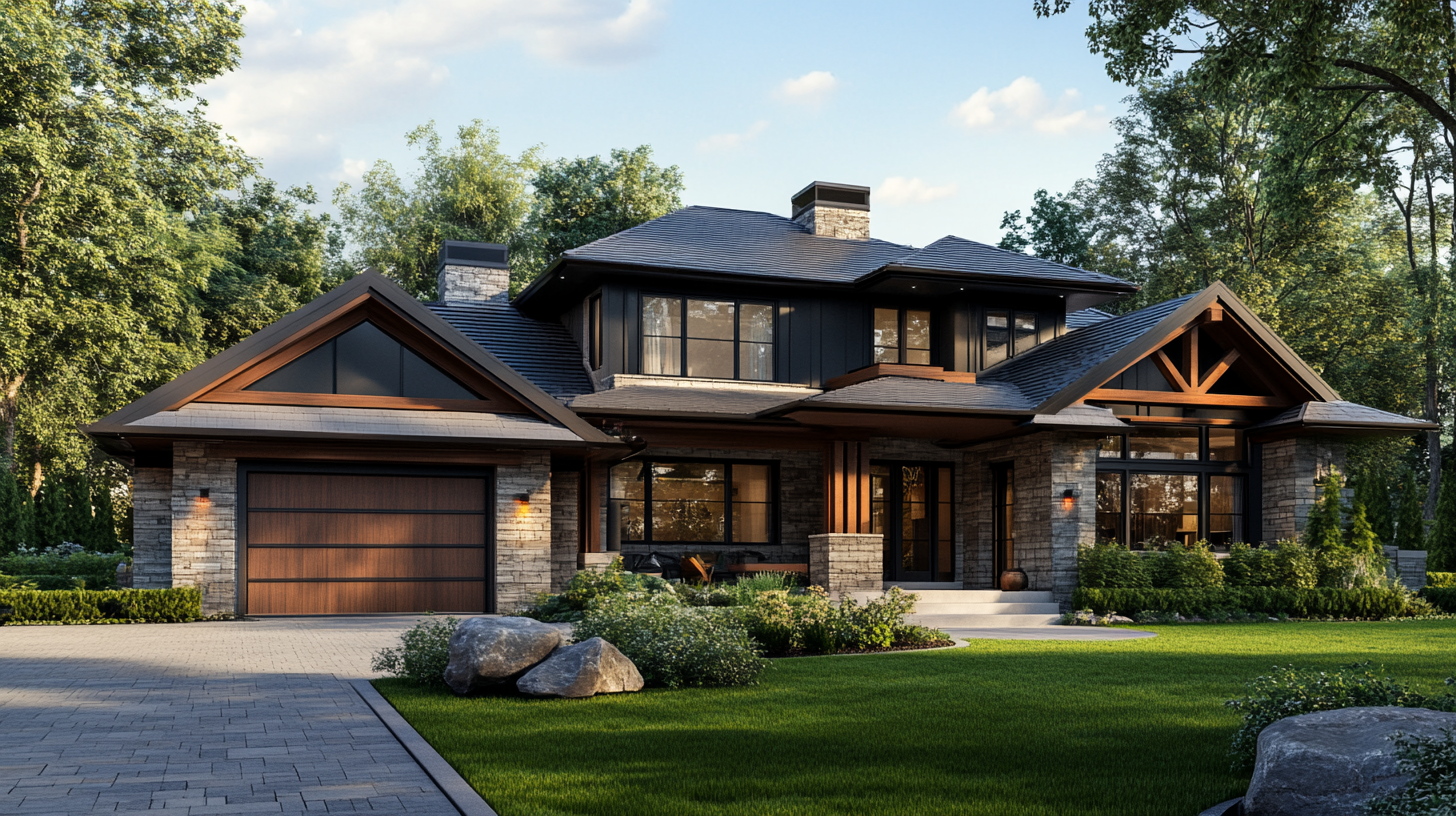Exploring Real-World Applications of Contemporary Kitchen Cabinets: Tackling Design and Space Challenges
In recent years, the kitchen has evolved from a purely functional space to a central hub for family gatherings and culinary experimentation. This transformation has heightened the demand for design solutions that balance aesthetics with practicality. According to a report by the National Kitchen and Bath Association (NKBA), kitchen renovations account for approximately 80% of home improvement expenditures, with contemporary kitchen cabinets being a critical component of these upgrades. With homeowners increasingly looking to modern designs that enhance both style and efficiency, contemporary kitchen cabinets are at the forefront, redefining how we approach kitchen layouts and functionality.
Contemporary kitchen cabinets not only offer sleek lines and innovative materials but also address the growing challenges of space management in many homes. A survey conducted by Houzz reveals that 40% of homeowners are concerned about maximizing available space while maintaining a cohesive design. This blog will explore real-world applications of contemporary kitchen cabinets, focusing on their ability to tackle design obstacles and optimize space without compromising on style. By examining case studies and industry insights, we aim to illuminate how these cabinets can transform kitchen environments into both practical and visually appealing spaces.

Innovative Storage Solutions: Maximizing Space with Contemporary Cabinet Designs
In contemporary kitchens, innovative storage solutions are at the forefront of design, providing both functionality and aesthetic appeal. One of the primary challenges homeowners face is maximizing space, especially in smaller kitchens where every inch counts. Through the use of contemporary cabinet designs, it's possible to create a seamless blend of style and efficiency. For instance, tall cabinets that reach the ceiling not only offer ample storage but also draw the eye upward, making the space feel larger and more open. Additionally, modular storage systems have revolutionized how we think about kitchen organization. These systems allow for adjustable shelves, pull-out drawers, and specialized compartments designed for specific items—be it pots, pans, or small kitchen gadgets. This flexibility means that homeowners can customize their storage solutions to fit their unique needs, reducing clutter and ensuring that everything has its rightful place. Furthermore, incorporating features like hidden hinges and sleek finishes can elevate the overall design, creating a modern, streamlined look that enhances the kitchen's ambiance. Moreover, innovative cabinet designs can incorporate technology to further enhance storage efficiency. Smart cabinets with built-in charging stations or LED lighting that activates on opening provide an extra layer of convenience. Such features illustrate how contemporary cabinetry is evolving beyond mere storage, considering the user experience and the importance of integrating technology into our daily lives. Ultimately, these solutions transform the kitchen into a well-organized, stylish, and highly functional space suitable for modern living.

Balancing Aesthetics and Functionality in Modern Kitchen Layouts
In today's kitchen design landscape, finding the perfect balance between aesthetics and functionality is paramount. According to the latest industry reports, an overwhelming 72% of homeowners prioritize stylish designs that also meet the daily practical needs of family life. This trend is clearly illustrated in recent transformations, such as a small kitchen that was designed to feel open and spacious while integrating essential functions for seamless cooking experiences.
The emergence of statement appliances, like chic gas stove ranges, has become a focal point in modern kitchens. In a recent feature, various designs were highlighted that harmoniously blend style and utility. For instance, these ranges not only serve as functional cooking stations but also enhance the overall visual appeal of the kitchen. The report emphasizes that 2025 will continue this trajectory, showcasing 20 kitchen design trends that marry vibrant aesthetics with practical layouts, enabling homeowners to express their personal style without compromising on ease of use.
Moreover, a shift towards warmer, cozier designs is evident, with 6 trending concepts fostering a welcoming atmosphere. Elements such as earthy textures and soothing palettes reflect the growing desire for comfort within contemporary kitchens. The statistics support this, as nearly 68% of homeowners are now opting for cozy elements that contribute to a harmonious and inviting living space. By embracing these trends, today’s kitchen designs are redefining luxury, making style and functionality not just compatible but indeed interdependent.

Sustainable Materials: Eco-Friendly Choices for Kitchen Cabinets
When it comes to contemporary kitchen design, the choice of materials plays a crucial role, particularly for cabinets. As homeowners become more environmentally conscious, the demand for sustainable materials in kitchen cabinetry is soaring. Eco-friendly choices not only contribute to reducing the carbon footprint but also enhance the overall aesthetic and functionality of the kitchen space.
Sustainable materials for kitchen cabinets can include bamboo, reclaimed wood, and low-VOC (volatile organic compound) finishes. Bamboo, for instance, is a rapidly renewable resource that offers durability and a beautiful natural finish, making it an ideal choice for modern kitchens. Reclaimed wood adds character and history to the design while minimizing waste, as it repurposes materials that might otherwise end up in landfills. Additionally, opting for low-VOC finishes ensures that your kitchen remains a healthier space, as these finishes release fewer harmful chemicals into the air.
Incorporating eco-friendly materials also encourages innovative design solutions that address common space challenges. Custom cabinetry made from sustainable resources can be tailored to fit unique dimensions and storage needs, maximizing functionality while maintaining a stylish look. As we explore the possibilities for contemporary kitchen designs, it becomes evident that sustainable materials not only meet practical demands but also align with a growing commitment to environmental responsibility.

Customization Options: Tailoring Cabinets to Fit Your Unique Kitchen
When it comes to contemporary kitchen design, personalized cabinets can be the key to both functionality and aesthetics. Homeowners now have the opportunity to customize their cabinets, allowing them to fit seamlessly within the unique dimensions and styles of their kitchens. From choosing the right materials and finishes to designing the layout and storage options, customization enables individuals to make their kitchen truly their own.
One popular customization option is selecting cabinet styles that complement the overall design theme of the kitchen, whether it's modern, rustic, or something in between. Homeowners can choose from various door styles, such as flat panel or shaker, and a plethora of colors and textures to create a cohesive look. Additionally, adjustable shelving, pull-out drawers, and built-in organizers can enhance functionality, making everyday cooking and meal preparation a breeze.
Another way to tackle design challenges is through unique storage solutions. Deep drawers for pots and pans, corner cabinets that maximize otherwise unused space, and open shelving for decorative items can all be tailored to fit specific needs. Custom cabinets can even incorporate smart-home technology, catering to the modern homeowner's desire for convenience and efficiency. This level of personalization not only optimizes the kitchen workspace but also turns it into a reflection of one's lifestyle and preferences.
Trends in Technology: Smart Cabinets for the Modern Home Chef
In today’s fast-paced culinary world, modern kitchen design has transcended traditional aesthetics, evolving into a blend of functionality and technology. The advent of smart cabinets is revolutionizing the way home chefs interact with their kitchens. These innovative storage solutions leverage cutting-edge technology to improve organization, accessibility, and convenience. Imagine cabinets that can monitor inventory, suggest recipes based on available ingredients, or even help manage meal prep with integrated timers and reminders. This seamless integration of technology into everyday tasks is not just a luxury; it's becoming an essential aspect of efficient kitchen management.
One of the most exciting trends in smart cabinets is the incorporation of voice-activated systems that allow chefs to access recipes or control appliances with simple verbal commands. This hands-free experience is a game-changer, especially when dealing with messy cooking tasks. Moreover, many modern cabinets come equipped with built-in LED lighting, touchscreen interfaces, and even climate control features for storing delicate ingredients. This functionality is complemented by sleek designs that maintain the aesthetics of the kitchen while maximizing utility.
Furthermore, the significance of connectivity cannot be overlooked. Smart cabinets can work in tandem with other smart home systems, creating a cohesive and interactive kitchen environment. Home chefs can monitor their kitchen from anywhere through smartphone applications, adjusting lighting, checking inventory, or even locking cabinets for added security. This convergence of design and high-tech creates a kitchen space that not only meets the demands of modern cooking but also enhances the overall culinary experience, making it more enjoyable and efficient.


